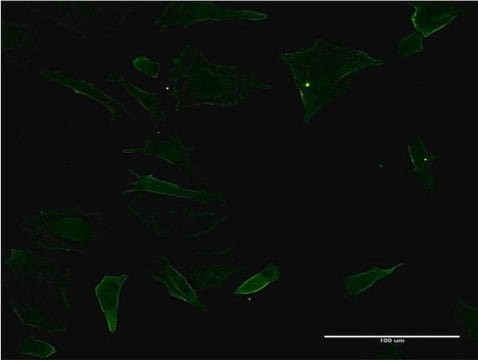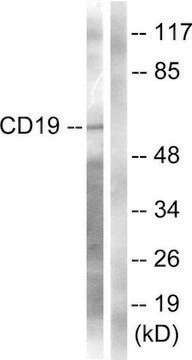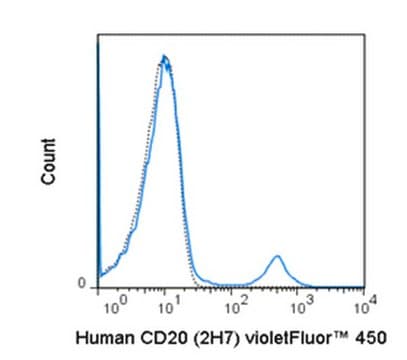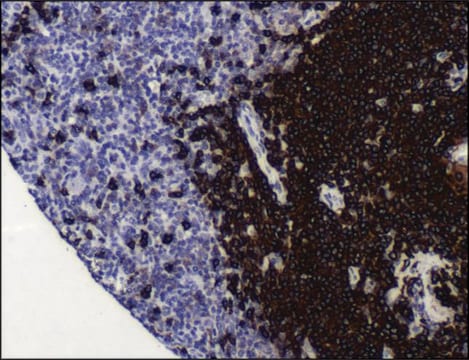General description
CD20 is a cell surface 33-37 (depending on the degree of phosphorylation) kDa non-glycosylated surface phosphoprotein expressed on mature and most malignant B cells, but not stem cells or plasma cells (low number of the CD20 has been also detected on a subpopulation of T lymphocytes and it can be expressed on follicular dendritic cells). Its expression on B cells is synchronous with the expression of surface IgM. CD20 regulates transmembrane calcium conductance (probably functioning as a component of store-operated calcium channel), cell cycle progression and B-cell proliferation. It is associated with lipid rafts, but the intensity of this association depends on extracellular triggering, employing CD20 conformational change and/or BCR (B cell antigen receptor) aggregation. After the receptor ligation, BCR and CD20 colocalize and then rapidly dissociate before BCR endocytosis, whereas CD20 remains at the cell surface. CD20 serves as a useful target for antibody-mediated therapeutic depletion of B cells, as it is expressed at high levels on most B-cell malignancies, but does not become internalized or shed from the plasma membrane following mAb treatment.
The CD20 gene, mapped to human chromosome 11q12-13, codes for a B lymphocyte differentiation antigen. The protein encoded by the gene is a 33kDa transmembrane phosphoprotein, specifically expressed in normal and neoplastic B-cells. CD20, also known as MS4A1, is a member of membrane-spanning 4-domains subfamily A (MS4A) family of molecules with multiple membrane spanning domains.
Specificity
The antibody 2H7 reacts with CD20 (Bp35), a 33-37 kDa non-glycosylated membrane receptor with four transmembrane domains, expressed on B lymphocytes (it is lost on plasma cells), follicular dendritic cells, and at low levels on peripheral blood T lymphocytes.
Immunogen
Human tonsillar B cells
Application
The reagent is designed for Flow Cytometry analysis. Suggested working dilution for Flow Cytometry is 0.6 μg/mL of sample. Indicated dilution is recommended starting point for use of this product. Working concentrations should be determined by the investigator.
Biochem/physiol Actions
Restricted expression pattern of CD20 in B- cells helps in distinguishing B-cell from T-cell lymphomas. CD20, is considered to be a potential therapeutic target in the treatment of B-cell malignancies such as diffuse large B-cell lymphoma and chronic lymphocytic leukemia. CD20, might act as an ion channel, thereby permitting the influx of calcium essential for B cell activation, proliferation and differentiation. In humans CD20 deficiency, leads to impaired T cell–independent antibody responses. The monoclonal anti-CD20 antibody, Rituximab (RTX) reduces the increased CD20 expressing T cells in multiple sclerosis patients.
Features and Benefits
Evaluate our antibodies with complete peace of mind. If the antibody does not perform in your application, we will issue a full credit or replacement antibody.
Learn more.Physical form
Solution in phosphate buffered saline, pH 7.4, with 15 mM sodium azide.
Disclaimer
Unless otherwise stated in our catalog or other company documentation accompanying the product(s), our products are intended for research use only and are not to be used for any other purpose, which includes but is not limited to, unauthorized commercial uses, in vitro diagnostic uses, ex vivo or in vivo therapeutic uses or any type of consumption or application to humans or animals.







